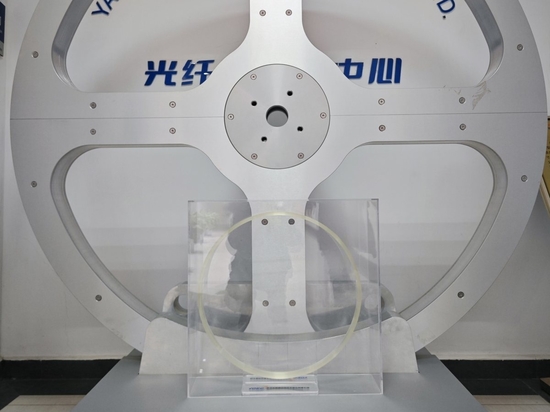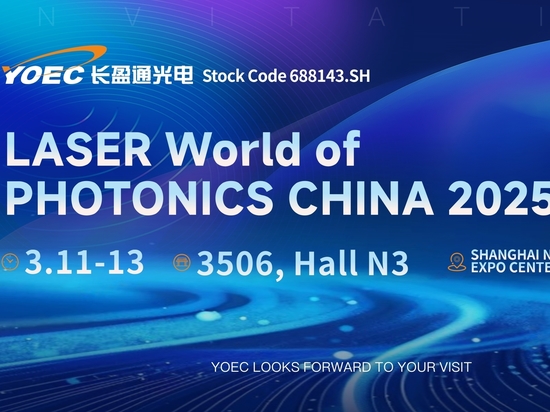
#Industry News
Development Situation and Trend of Integrated Fiber Optic Gyroscope
Development Situation and Trend of Integrated Fiber Optic Gyroscope
With continuous deepening and development of inertial navigation technology the application field in recent years, it puts forward higher requirements for optical gyroscope such as low cost, integration, lightweight miniaturization, low power consumption and so on. At present, most fiber optic gyroscopes use discrete optical components, which are packaged together by tail fusion to form the optical path of Sagnac reciprocal interferometer. Although these discrete optical components can freely choose the performance parameters, they will lead to many parasitic reflections and introduce the loss of fusion joints and polarization errors, thus reducing the performance of the gyroscope. In addition, the use of discrete components will also lead to an increase in the size and weight of the gyroscope. With the development of optoelectronic manufacturing technology in recent years, it makes the integrated application of photonic materials and devices possible, and some progress and breakthrough has been made continuously in research on integrated optical gyroscope.
At present, the research on the optical gyroscope is subdivided into research on laser gyroscope, integrated optical gyroscope and fiber optic gyroscope.
On the one hand, the integrated optical gyroscope uses smaller and more compact structures, integrates multiple discrete optical components into one chip, and replaces the functions of multiple discrete devices with multi-function integrated chips. On the other hand, all- optical integration indicates to integrate light sources, couplers, waveguides, detectors, waveguide coils into the same chip, which aims to reduce the device volume, reduce costs, achieve large-scale production, cost- effective, widely used in small equipment.
The optical path of the fiber optic gyroscope consists of light source, coupler, modulator, detector and optical fiber coil. At present, the fiber optic gyroscope has begun to develop in the direction of the integration of the optical path, which integrates other optical devices except the optical fiber coil in the fiber optic gyroscope on a single chip, and couples the on-chip optical waveguide with the optical fiber coil. A single integrated optical chip is used to replace multiple discrete optical devices in the traditional fiber optic gyroscope and achieve the integration of optical devices, which has significant advantages such as high precision, small size, low cost, high reliability and so on. With the rapid development of optical integration technology, some progress and breakthrough has been made continuously in the research on integrated fiber optic gyroscope.
In 2011, Gener8 of the United States integrated 24 discrete optical components into a hybrid chip with the size of 67x11x3 mm [1]. After being connected to the fiber coil, its performance is similar to that of the navigation- class gyroscope manufactured with discrete components.
In 2017, the University of California developed a chip-level “integrated optical driver” [2], which realized the monolithic integration of one light source, two 3dB couplers, two phase modulators and three photodiodes with a size of 9mm×0.5mm. The size, weight, power consumption and cost of the optical gyroscope are greatly reduced. The chip is connected to an optical fiber coil with a length of 180m and a diameter of 0.2m, and its performance reaches 0.53 ° /s.
In 2019, KVH developed a multi-functional photonic integrated circuit [3], which is specially used to manufacture high-end tactical fiber optic gyroscope (FOG) at low cost. The 110m optical fiber coil with a diameter of 6cm has a random walk angle of 0.59 ° /h/ √ Hz, the zero bias stability of 0.24 ° / h and full temperature scale factor instability of 43.09 ppm.
In 2021, the research team of Beijing Institute of Automatic Control equipment carried out the research on the core components and principle prototype of integrated fiber optic gyroscope [4], and optimized the scheme of integrated optical gyroscope. The zero bias stability of the optimized gyroscope reaches 0.048° /h, and the size of the whole machine is only 35 mm × 35 mm × 35 mm.
In addition, Fizoptika, Emcore, California Institute of Technology, Honeywell, Beijing University of Aeronautics and Astronautics and Central North University in Russia have also carried out research work on integrated fiber optic gyroscope, and have made continuous breakthroughs and progress in research on integrated fiber optic gyroscope technology.
The integrated manufacturing process is more complex and difficult due to the different material systems corresponding to each optical device. The selection of appropriate integrated chip materials and its design and processing technology are the key technologies of the integrated gyroscope. The performance of the integrated chip directly affects the output optical power, spectral width, detection responsiveness and the photoelectric crosstalk introduced in the chip integration process will affect the accuracy of the gyroscope.
At present, the optical path of integrated fiber optic gyroscope is basically composed of integrated optical chip and miniature optical fiber coil. Connecting the optical integrated chip and optical fiber coil by direct coupling can reduce the polarization error of the gyroscope and improve the reliability of the gyroscope.
The miniaturization of optical fiber coil is also one of the key technologies to realize the integrated gyroscope, and its performance directly affects the accuracy and environmental adaptability of the gyroscope. At present, the micro fiber coil made of thin diameter optical fiber is being verified and applied, and the accuracy of integrated fiber optic gyroscope is improved by constantly improving the winding process to improve the environmental adaptability of micro fiber coil such as temperature, vibration, magnetic field and so on.
The fiber optic gyroscope with increasing accuracy has more competitive advantages than mechanical gyroscope and laser gyroscope in the high-precision navigation system, while the integrated fiber optic gyroscope, which is still on the stage of research and development, can achieve the accuracy of fiber optic gyroscope in theory, and it has many advantages, e.g. miniaturization, low cost, low power consumption, large-scale production and so on.





